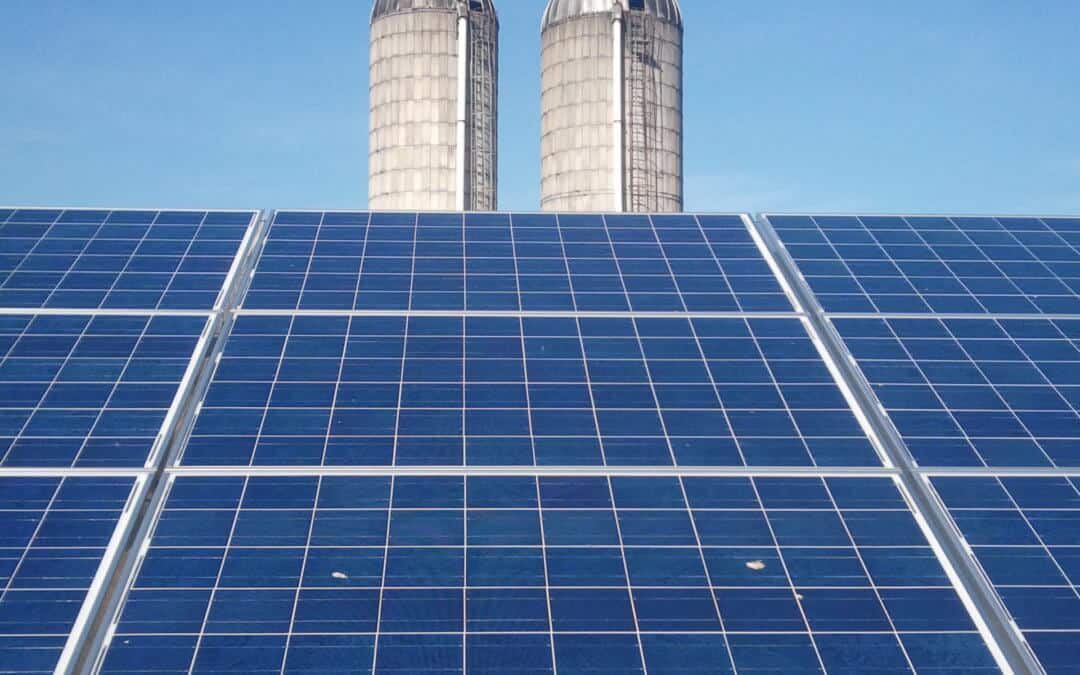What is Solar Ecology?
Put simply, it is the systemic linkage of humans and other life founded upon the favorable solar energy abundance on Earth. Recent world population projections show we are expected to surpass 11 billion people by the end of the century. With that, there is an evolving challenge of effectively managing resources in order to supply sufficient food, water, and energy to support this growing populace. Solar development is growing exponentially and has vast potential for meeting increasing energy demands. Per Penn State University, “In this emerging era of flow-based renewable energy, it is important to explore the systematic interactions between humans, biota and their surrounding environments, and the dynamic flow of solar energy to Earth’s surface. Expanding and sharing knowledge on these coupled systems will build the framework for integrative design that deeply influences the food-energy-water nexus and addresses future stakeholder preferences.”
What does that have to do with Agricultural Solar?
Seeking a dependable and diversified source of income, PA agricultural business owners have decided that agricultural solar is a perfect way to maximize the value of their land and prepare it for future generations. Agricultural solar projects allow the industry to expand the overall agricultural use of their land while minimizing the risk of significant revenue loss.
Check out this project in Grafton, MA. This solar project was divided into two arrays, one for vegetables and one for livestock. The vegetable array supports cultivation methods that minimize soil disturbance, utilize cover crops, implement crop rotation, and promote species diversity. The livestock array encourages grazing methods that bolster soil quality and enhance stormwater retention. Rotating animals on meadows subdivided within the property, as advised by soil specialists certified by the Natural Resource Conservation Service, will also improve ecological diversity. Together these practices adhere to the principles of “regenerative agriculture,” an increasingly popular farming theory rooted in improving land quality that is garnering attention due to its ability to improve land’s capacity to sequester carbon, diversify ecology, and increase agricultural yields. For more information, please see this report written by the Rodale Institute titled “Regenerative Agriculture – A Down to Earth Solution for Global Warming”.
What about the Pollinators?
Pollinator-friendly solar development to the symbiotic relationship between solar and deep-rooted perennial wildflowers/grasses planted. Pollinator-friendly solar projects can provide a host of ecosystem services including:
- habitat for wild insect pollinators
- improved groundwater recharge
- reduced erosion
- soil carbon sequestration
- higher crop yields from the increase in pollination services
Benefits of Solar + Perennial vegetation under solar panels for farmers (via Yale’s Clean Energy Finance Forum):
Reduced operations and maintenance (O&M) costs: Pollinator-friendly solar sites often require less maintenance over a project lifetime than sites with conventional turfgrass. This is because perennial vegetation, once established, thrives without frequent mowings and pesticide sprayings. Additionally, the deep root system characteristic of most perennial plants improves soil health, reduces soil compaction, and better insulates the ground. In cold climates, this increase in soil organic matter may reduce the risk of frost heave damage during the winter.
Panel efficiency gains: Early and ongoing research suggests that planting deep-rooted vegetation beneath solar panels creates a cooler micro-climate around the panels. That helps improve the efficiency and energy output of a solar project, driving increased project revenues. Developers who implement pollinator-friendly solar practices at their site also stand to benefit from reduced need to suppress efficiency-reducing dust.
Smoother permitting process: In almost all cases, developing a solar project requires taking land out of some other use, whether it be forest, farmland, open space, etc. Because pollinator-friendly solar development provides auxiliary benefits for a range of stakeholders, including farmers, opting for these practices may help mitigate the potential land-use conflicts of conventional development. Marketing solar projects as aesthetically attractive sites with the potential to improve local soils, water, and food can help garner more widespread support for your solar project, lower permitting costs, and reduce litigation vulnerability.
Stronger environmental credentials: The solar industry has the opportunity to play an important role in reversing the decline of native insect pollinators, which has been driven primarily by habitat loss. Many developers see merit in boosting the environmental sustainability of their projects above and beyond energy and are committing to these practices across their portfolios. Pollinator-friendly solar development is a low-risk, highly visible action that can deliver cost savings while generating positive press and reputational benefits. Taking action soon could also help developers get ahead of future regulations and industry competition, which is mounting.


Recent Comments